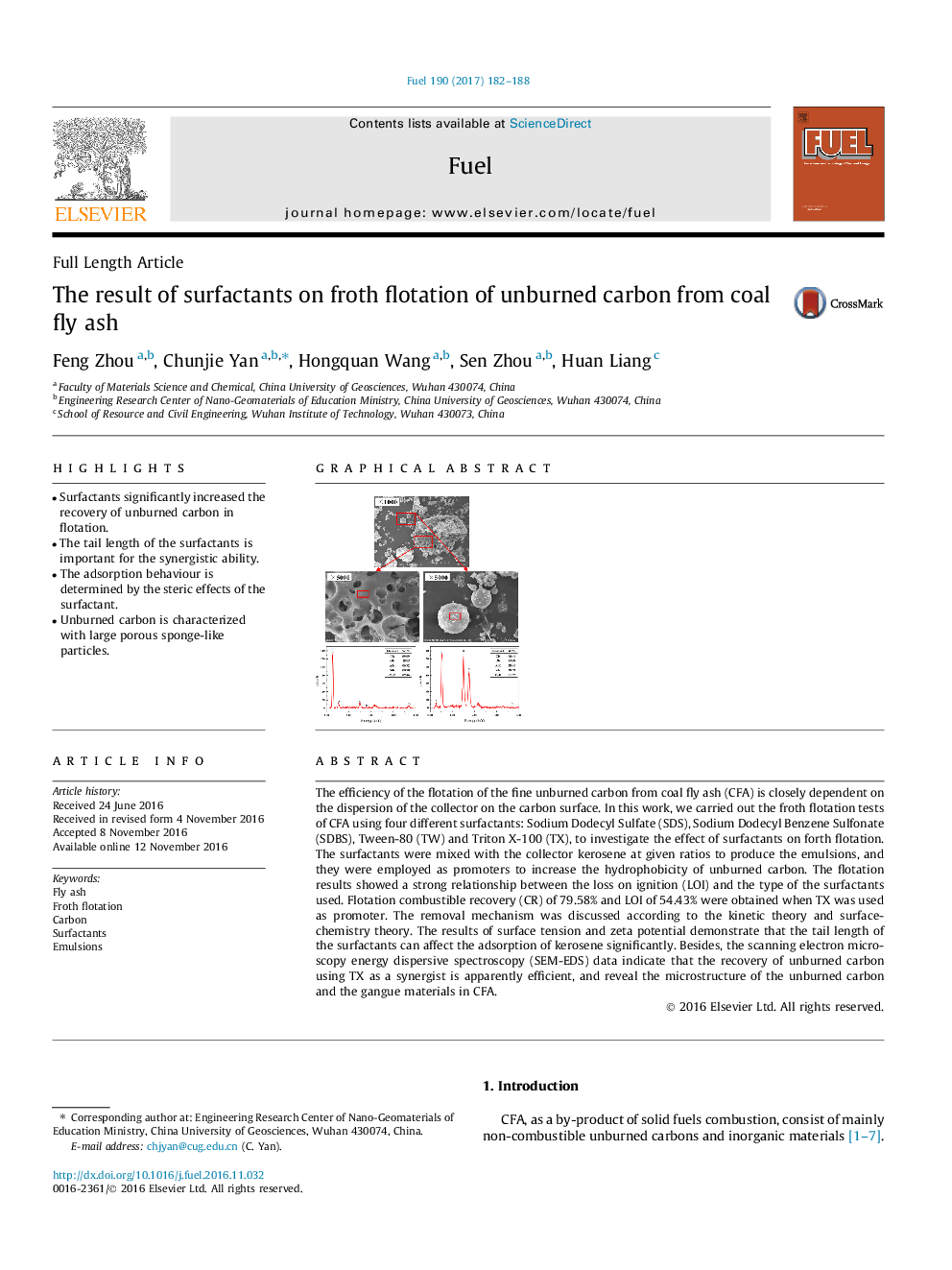| Article ID | Journal | Published Year | Pages | File Type |
|---|---|---|---|---|
| 6475563 | Fuel | 2017 | 7 Pages |
â¢Surfactants significantly increased the recovery of unburned carbon in flotation.â¢The tail length of the surfactants is important for the synergistic ability.â¢The adsorption behaviour is determined by the steric effects of the surfactant.â¢Unburned carbon is characterized with large porous sponge-like particles.
The efficiency of the flotation of the fine unburned carbon from coal fly ash (CFA) is closely dependent on the dispersion of the collector on the carbon surface. In this work, we carried out the froth flotation tests of CFA using four different surfactants: Sodium Dodecyl Sulfate (SDS), Sodium Dodecyl Benzene Sulfonate (SDBS), Tween-80 (TW) and Triton X-100 (TX), to investigate the effect of surfactants on forth flotation. The surfactants were mixed with the collector kerosene at given ratios to produce the emulsions, and they were employed as promoters to increase the hydrophobicity of unburned carbon. The flotation results showed a strong relationship between the loss on ignition (LOI) and the type of the surfactants used. Flotation combustible recovery (CR) of 79.58% and LOI of 54.43% were obtained when TX was used as promoter. The removal mechanism was discussed according to the kinetic theory and surface-chemistry theory. The results of surface tension and zeta potential demonstrate that the tail length of the surfactants can affect the adsorption of kerosene significantly. Besides, the scanning electron microscopy energy dispersive spectroscopy (SEM-EDS) data indicate that the recovery of unburned carbon using TX as a synergist is apparently efficient, and reveal the microstructure of the unburned carbon and the gangue materials in CFA.
Graphical abstractDownload full-size image
